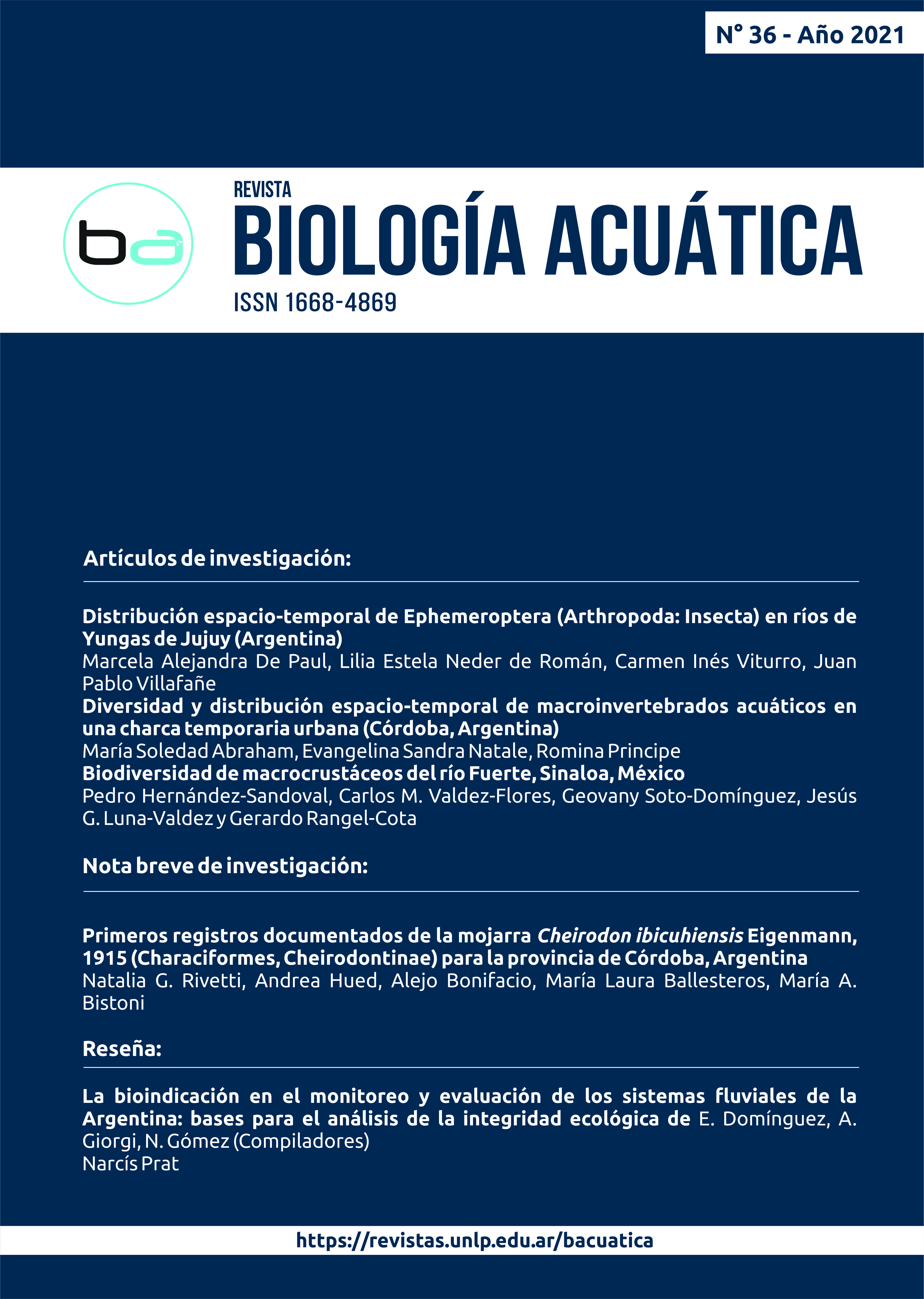Diversity and spatio-temporal distribution of aquatic macroinvertebrates in an urban temporary pond (Córdoba, Argentina)
DOI:
https://doi.org/10.24215/16684869e020Keywords:
Aquatic invertebrates, habitat, life-history strategies, macrophytes, seasonalityAbstract
Temporary ponds are worldwide recognized as ‘hotspots’ of biodiversity within a region or landscape. The aim of this study was to assess the diversity and composition of the aquatic macroinvertebrate assemblages of an urban temporary pond, due to its importance in the landscape context. We analized the spatial distribution of the assemblages in different habitats and their temporal variation. Aquatic macroinvertebrates were collected in wet and dry periods by sampling scoops and hand net. The specimens were identified, quantified, and assigned to groups considering their life-history strategies. Fifty-three invertebrate taxa were identified and the correspondence analysis distinguished the assemblages in relation to the presence of aquatic vegetation and seasonality. The Indicator Value method identified characteristic taxa of the different habitats and hydrological periods. The Group 1 of life-history strategy (with adaptations to desiccation, water requirement for reproduction and with passive dispersion) and the Group 4 (without adaptations to desiccation, water requirement for reproduction and with active dispersion) presented the highest number of taxa in all habitats. The highest abundance was observed in sediments without vegetation whereas richness, diversity and evenness were higher in vegetated habitats. These results highlight the importance of macrophytes and seasonality in the maintenance of biodiversity and provide baseline information for monitoring, management and conservation of urban temporary ponds.





















